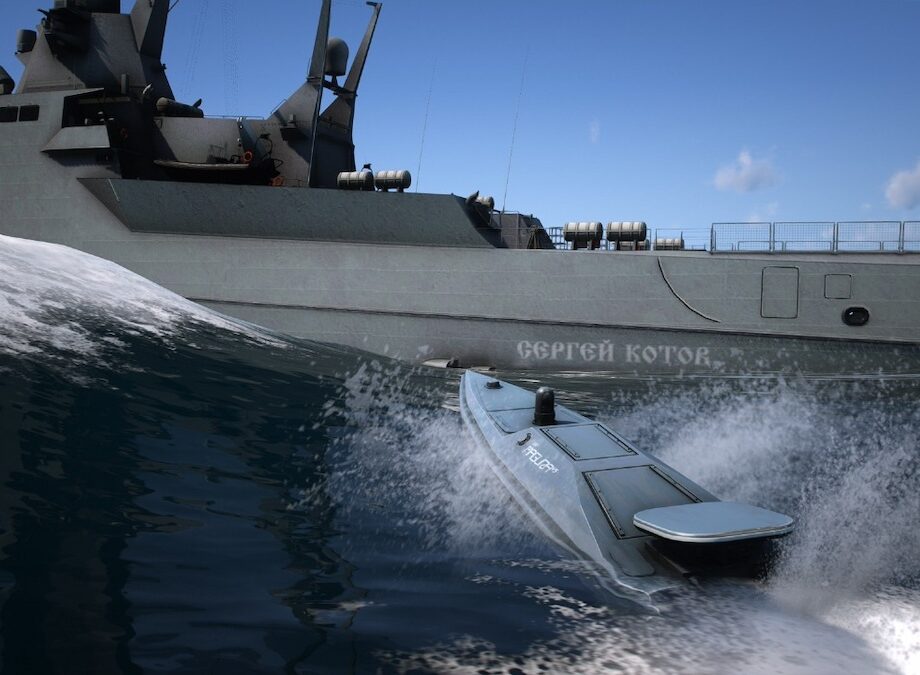A potential partnership at sea
Ukraine and the Philippines are moving toward a defense agreement that would open the door to joint production of drone boats, a capability Manila sees as a fast, flexible way to strengthen maritime defenses in the West Philippine Sea. Ukrainian Ambassador Yuliia Fediv has said both governments are working toward a memorandum of understanding that could be signed around October, with a Ukrainian Ministry of Defense delegation set to travel to Manila for talks. The draft document is already with the Philippine Department of National Defense, creating a concrete path for cooperation if both sides approve the terms.
- A potential partnership at sea
- Why drone boats matter for Manila
- What Ukraine brings to the table
- Inside the proposed deal
- How coproduction could work in the Philippines
- Alliances and regional strategy
- Capabilities, risks, and countermeasures
- Money, politics, and industry realities
- Timelines and what to watch
- What to Know
The appeal is clear. Ukraine has developed and used maritime drones in heavy combat, targeting the Russian Navy in the Black Sea. That wartime experience, coupled with a growing drone industry, could help the Philippines field a larger and more capable uncrewed surface fleet. Manila views naval drones as a cost effective complement to manned ships and a practical near term alternative to submarines. The United States has provided a number of uncrewed surface vessels that have appeared in joint exercises, and Philippine crews are gaining hands-on experience. The current fleet is small, however, and depends on foreign support. A co built program with Ukraine could scale numbers, diversify suppliers, and help local industry move from prototypes to production systems.
Ukraine’s first nonresident defense attaché to the Philippines, Col. Andrii Bilenkyi, has met Philippine counterparts across the services in recent weeks, including at Air Force, Army, and Navy headquarters. Talks have covered technology, training, capability development, and cybersecurity. Officials and engineers are also expected to meet at a drone warfare summit in Zambales in October, a convenient venue to deepen technical discussions and refine requirements.
Why drone boats matter for Manila
The Philippines faces a larger and better equipped rival at sea. Chinese coast guard, navy, and maritime militia ships assert expansive claims in the South China Sea and have blocked or harassed Philippine missions near Second Thomas Shoal and Scarborough Shoal. Philippine leaders want more persistent surveillance and quicker reaction times, plus tools that can impose costs on a stronger opponent without triggering uncontrolled escalation. Uncrewed surface vessels, often called drone boats, are designed for this kind of difficult environment.
Drone boats can handle dangerous and tedious missions while keeping crews out of harm’s way. They are faster to build than major warships, easier to replace, and cheap enough to deploy in numbers. Modern systems can navigate autonomously, stream live video, track targets with electro optical and infrared sensors, and carry different payloads. They can patrol disputed waters, shadow intruding ships, and conduct intelligence gathering without the political sensitivities that come with placing crews in harm’s way.
- Persistent maritime surveillance along routes to Second Thomas Shoal and other features
- Escorting or screening resupply missions by monitoring and recording interactions
- Deploying decoys to confuse adversary targeting and draw sensors away from manned ships
- Delivering precision strikes if authorized, using warheads designed for ship or infrastructure targets
- Scouting and mapping for amphibious operations and coastal defense
Submarines remain a powerful deterrent, but they take many years and large budgets to buy, crew, and sustain. Drone boats require far less training and infrastructure, can be operated from small bays or modular forward sites, and can be networked into a layered defense alongside aircraft, coastal radars, and patrol vessels. The swarm concept, many small craft working together, can overwhelm defenses that are tuned to stop a handful of large ships. These advantages explain why Manila has raised drones as a near term option while longer lead projects continue.
What Ukraine brings to the table
Ukraine’s experience is hard earned. Since 2022, it has scaled production of uncrewed platforms and learned how to fight with them under constant pressure. Its maritime drones have hit Russian Black Sea Fleet vessels and forced changes in how Russian ships operate. Ukrainian teams have refined communications, onboard autonomy, and mission planning for long distance runs across heavily monitored waters. These lessons, and the industrial base that supports them, are the core of what Kyiv is offering Manila.
Ukrainian companies now design several classes of surface drones for different tasks, from reconnaissance and mine countermeasures to long range strike. They have developed concepts for remote control, semi autonomous navigation, and cooperative tactics where multiple drones share roles and sensor data. That mix of technology and tactics is attractive to a country like the Philippines that needs to cover wide sea spaces with limited crews and budgets.
Ambassador Fediv has framed the proposed deal as a legal and practical foundation for deeper work between defense industries.
Ukrainian Ambassador to the Philippines Yuliia Fediv said the first step is to sign a defense agreement to create the legal framework for the next steps.
She has also stated that Ukraine is ready to share both its successes and lessons learned with partners facing similar threats. For Manila, that means a potential shortcut to mature designs, training pipelines, and maintenance practices that have been tested in combat.
Inside the proposed deal
The memorandum now under discussion would set the terms for defense cooperation, including technology sharing, training, and the path to local production. It is the legal scaffolding that ministries use to approve projects and move money. If signed in October, the parties could establish joint working groups to translate the framework into specific programs, such as a pilot batch of maritime drones assembled in the Philippines under Ukrainian guidance.
Ukrainian officials have already toured Philippine facilities and met with service chiefs. Cybersecurity cooperation is expected to feature in talks as well, since drone command links and data networks are prime targets for electronic attack. Ukrainian representatives are also expected at the drone warfare summit in Zambales, which gives engineers and operators a chance to compare notes on how to integrate new systems into day to day missions in the West Philippine Sea.
Philippine Defense Secretary Gilberto Teodoro Jr. has repeatedly argued that unmanned systems can fill critical gaps while big ticket items remain years away. He has described drone boats as a credible substitute for submarines in the near term.
Defense Secretary Gilberto Teodoro Jr. said unmanned surface vessels could serve as alternatives to submarines for the Philippines.
A Ukraine Philippines agreement would not replace Manila’s ties with the United States. It would give the armed forces another partner, more design options, and a path to production on Philippine soil that can be sustained even if global supply chains tighten.
How coproduction could work in the Philippines
Coproduction often starts with what a partner already builds well. The Philippines has many small and mid size boatyards, and a thriving ferry and fast craft sector clustered in places like Cebu and Batangas. These yards know how to lay hulls, run quality control, and deliver vessels on tight schedules. A drone boat program could tap that capacity. Ukrainian designs could be adapted to Philippine hull forms, with local firms fabricating structures and installing propulsion, batteries, and navigation systems. Sensitive electronics, such as sensors, controllers, and secure radios, could arrive from Ukraine for integration and testing in country.
The immediate benefits would include transfer of know how, jobs for welders and marine electricians, and a domestic maintenance base. Over time, Philippine engineers could stand up their own design teams, qualifying local suppliers for components like camera masts, launch rails, and power management. Training courses would produce operators, mission planners, and depot technicians who can support large numbers of craft without foreign contractors. That matters for surge capacity during crises.
Practical steps include setting up a joint integration line, agreeing on software baselines, validating communications on Philippine networks, and writing doctrine for how drone boats work with coast guard cutters and navy patrol ships. Export controls and intellectual property must be handled carefully, with clear rules for what can be built locally and what requires Ukrainian oversight. Successful pilot runs would pave the way for larger orders and optional kits, such as mine reconnaissance or anti ship variants.
Alliances and regional strategy
A drone boat partnership with Ukraine would sit alongside Manila’s alliance with Washington and deepening ties with other partners. US supplied uncrewed surface vessels have already featured in joint exercises, and the Philippines can host systems at sites being upgraded under the Enhanced Defense Cooperation Agreement in Palawan and elsewhere. Japan and Australia have expanded training and maritime domain awareness programs with Manila, which can link into uncrewed operations through shared data and common procedures.
The Philippines also signed a security cooperation document with Lithuania in July that covers cybersecurity, ammunition, defense industry collaboration, and maritime security. Lithuanian Defense Minister Dovile Sakaliene framed that effort in wider geopolitical terms during public remarks, urging coordination among democracies.
Lithuanian Defense Minister Dovile Sakaliene warned of an emerging authoritarian axis of Russia, China, North Korea, and Iran, urging democratic states to coordinate their responses.
These networks of cooperation fit the Philippines’ aim to grow capacity at home while staying connected to partners who can train crews, share intelligence, and help field new technology faster.
Capabilities, risks, and countermeasures
Modern drone boats are modular. A base craft carries a suite of cameras, radar or radar reflectors, navigation aids, and encrypted radios. A mission package can add a warhead for strike missions, a towed sonar for mine hunting, or extra fuel for long patrols. Control can be direct line of sight from a shore station or a mother ship, or beyond line of sight through satellite links. Autopilots handle routine course changes while onboard computers avoid collisions and follow mission waypoints. Operators review video, radar plots, and alerts, then give commands that the craft executes in near real time.
China can counter with electronic warfare, drones, helicopters, fast interceptors, and coastal sensors. Jamming can cut off GPS and disrupt command links. Spoofing can confuse navigation. To fight through this, operators use multiple navigation methods, such as inertial systems and visual maps, and radios that hop between frequencies with strong encryption. Drones can operate in mixed formations with manned ships and aircraft to hide in clutter and present more targets than an opponent can track.
What Philippine drone boats might do day to day
In peacetime and during tensions, uncrewed surface vessels could create a near continuous presence across key routes to and from outposts in the Spratlys. They could stand off at safe distances while providing full motion video and radio recordings of interactions with foreign ships. During resupply to Second Thomas Shoal, a screen of drones could patrol likely approaches and alert crewed vessels to aggressive maneuvers. During exercises, they could simulate enemy swarms, helping train crews in realistic conditions. If conflict loomed, strike configured craft could pierce a blockade or hit an exposed vessel in a port or anchorage, always under strict rules of engagement set by civilian leaders.
Where drone boats fall short
Endurance is limited by fuel or battery capacity. Weather on the West Philippine Sea can be harsh, with squalls and heavy seas that strain small craft. Electronic attack can blind or separate a drone from its controller. These weaknesses are manageable but real. Better autonomy lets a drone complete a mission even if the link drops out. Anti jam antennas and inertial navigation reduce dependence on GPS. Launching many small craft at once raises the cost to an adversary who must find and stop each one. Still, crews must train to recover lost drones, rotate batteries and engines, and repair battle damage quickly.
Money, politics, and industry realities
New capability only matters if it is delivered, sustained, and scaled. The Armed Forces of the Philippines modernization program runs in stages, and the budget must balance aircraft, ships, coastal defenses, and awareness systems. Drone boats are cheaper than major ships, yet fleets still require a steady flow of spare parts, fuel or batteries, and trained operators. Program managers will need to schedule sea trials, certify safety procedures, and write doctrine that covers how drones coordinate with coast guard, navy, and air assets.
Industry capacity is another test. Philippine boat building is busy with commercial work. Military standards, cybersecurity, and quality assurance for sensitive electronics demand new processes. Fragmentation across many small yards can slow standardization. Politics also matters. A future administration might try a diplomatic reset with Beijing, or revisit industrial priorities. Contracts that spread work across regions and encourage transparency can build staying power. Clear legal rules, strong export control compliance, and coordination with allies will help Manila grow this capability without surprises.
Timelines and what to watch
If Manila and Kyiv sign the memorandum in October, expect working groups to form quickly, followed by a pilot production line for a small batch of drones. Sea trials near Palawan or Zambales are likely, paired with operator training and network integration. A first generation craft could be ready for exercises within a year of contract award if funding and facilities are in place.
Watch for public tenders or announcements tied to integration facilities, communications testing, and training courses. Also watch for how new drones are woven into major exercises with allies. Interoperability is a force multiplier. If Philippine teams can plug Ukrainian designed systems into US and partner data links during joint drills, the value of each drone rises sharply.
What to Know
- Ukraine and the Philippines are working toward a defense memorandum that could be signed around October to enable drone boat coproduction.
- Kyiv has submitted a draft agreement and plans to send a Ministry of Defense delegation to Manila for talks.
- Ukraine brings wartime experience building and operating maritime drones against a bigger navy.
- Manila views drone boats as a cost effective alternative to submarines in the near term and a complement to manned ships.
- US supplied uncrewed surface vessels are already in Philippine service for training and exercises, with operations expected from sites in Palawan and other EDCA locations.
- Coproduction would tap Philippine boatyards for hulls and integration, while Ukrainian firms provide sensors, software, and training.
- Electronic warfare and endurance are key risks for drone boats, managed through better autonomy, anti jam navigation, and swarming tactics.
- Budget limits, industry fragmentation, and political shifts are the main challenges to a sustained program.
- The Philippines also signed a security cooperation pact with Lithuania in July, expanding networks for defense industry and cybersecurity.












